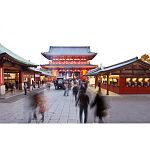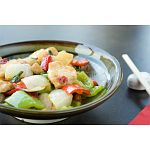Visa
You may not need visa but you need to register with the Police. Registration is done automatically by hotel staff upon check-in, however if you are staying with friends in a private dwelling, you must register your presence with the police in the district in which you are staying.
Getting there

The main airport in Serbia is in the capital city, Belgrade, and it is named after the Serbian scientist Nicola Tesla. It’s avery small airport and quite close to the city centre. Once you are out of the building don’t let yourself be persuaded by cab drivers to take you to the city centre for 20 euros as that is not a bargain. As the airport is very close to the town (25 min from New Belgrade and 35 min from the old town, depending from the traffic over the Danube) you can get on the shuttle bus service provided by the national airline, still called Yugoslavian Airlines (JAT) or on one of the local buses (LASTA). The JAT shuttle will take you to the city centre and drop you in front of the Hotel Slavija, and the buses will take you to the train and bus stations which are not far from each other. The cheapest option is bus number 95 which stops close to the domestic departures building, but it does take ages to get into town, driving through all the new suburbs of Zemuna and New Belgrade – interesting though! Tickets can be bought before you catch the bus from the newsagent at the airport, and they cost 90 dinars which is less then £1.
You can also fly to Nis, a quaint town in the south that is rapidly gaining popularity.
Trains connect Serbia to all quarters of Europe, the main routes being Budapest, Vienna, Thessalonika, Bucharest, Sofia and Skopje and with the possible exception of routes to the East, they are comfortable, punctual and clean, and overnight trains are a good way of arriving. Trains within Serbia however are a little older and a bit shabby.
The Danube flows right through the centre of Belgrade and many river cruises on the way to the Black Sea from Budapest moor overnight here. It’s an expensive way to get to Belgrade, but you do have time to see Belgrade’s main street and impressive fortress.
Getting around
Very difficult! Most maps, sign posts and other important information is written in the Cyrillic alphabet rather than the western Latin alphabet, and this is the official script of Serbia. You might find it useful to familiarise yourself with Cyrillic letters in order to be able to spell out words – names especially.

The main public transport in Belgrade are the buses which are very frequent. There are thousands of taxis too, they vary in size, comfort and price – sometimes you get a little old Yugoslavian banger, sometimes a much more modern car! You can hail taxis in the street or go to a taxi rank, or call one (or get someone local to call one for you)
Beotaxi, 011/970 (White cab)
Žuti taxi, 011/9802 (Yellow cab)
Pink taxi, 011/9803 (Pink cab)
Hiring a car is very easy but driving on your own around Serbia could be a tricky business especially if you are a first time visitor. Driving is on the right, roads could be bumpy, traffic signs are posted in the official cyrillic letters and fellow drivers are not very patient. If you can’t afford to pay for someone to drive you around then travel by bus.
Where to stay?
In Belgrade I would recommend the Moscva Hotel which has a very long history (it opened in 1908), is very conveniently located in the city centre and has welcomed such distinguished guests as Albert Einstein and his Serbian wife, Mileva. Another hotel with a good location is the Balkan Hotel, not far from the Moscva.
Be aware that prices are higher but the standards not as good as in four or five star hotels in Western Europe. If you are going outside Belgrade I would suggest you stay in small inns which are affordable and professionally run. This Easter I am staying in one very close to the National Park of Fruska Gora., where there is a spa and a few beautiful old monasteries to visit.
Spa hotels are usually too expensive for the level of comfort they offer. The rooms are old fashioned and the hotels themselves usually a little unkempt as there has been not enough money for the government to invest in them (they are mostly state-run). However, the staff are always lovely!
National holidays.
There are too many holidays for the western soul! The number of official holidays comes from the fact that the old communist ones are still kept plus there are several new ones added since those days – so they represent the turmoil Serbia has been through in the last 20 years.
January 1 - 2 (New Year's Day), January 7 (Eastern Orthodox Christmas), January 14 (National Holiday (Orthodox New Year), February 15 (Constitution Day), 2 Apr Orthodox Good Friday, 5 Apr Orthodox Easter Monday, May 1 - 2 (Labour Day).
Working holdays
January 27 (Saint Sava's Day), 9 May Victory Day, 28 Jun St Vitus' Day, 31 December New Year Eve.
Local time
Central European Time Zone GMT+1
Religion
Orthodox Christianity is the major religion, the Serbian Orthodox Church became autonomous in 1219. Other important religions are Islam, Catholicism and Judaism.
What is Serbia famous for?
Hospitality – regardless of the hardship Serbians have been through in recent times guests are always very welcome. And always welcomed with open arms.
Spas – the Republic of Serbia is rich in thermal mineral springs whose waters, depending on their chemical make-up, temperature and other properties, make it possible to treat and cure almost any illness for which spas are recommended.
Monasteries - medieval orthodox monasteries such Studenica, Manasija, Žiča, Ravanica are an excellent opportunity to see part of Serbian history. If you are interested in art, there are excellent fresco masterpieces, especially the Beli Anđeo (White Angel) fresco in Mileseva monastery.
Nightlife – Belgrade is one big night club from 10pm until the early morning, especially during the summer time when most of the bars are open on the banks of rivers Danube and Sava. Drink domestic beers as the bars don’t stock a huge amount of foreign beers and they often run out of them. Try the national drink, rakija (raki) which is usually made of plums and is 40% alcohol. Older people swear by its medical attributes.
Festivals - Visit EXIT festival that is happening in the beginning of July, in Novi Sad, on Petrovaradin fortress. The EXIT festival came into being in the year 2000 as an act of rebellion against the regime of Slobodan Milosevic, that had for years been keeping Serbia out of touch with the outside. The Belgrade Beer Festival, takes place at Ušće in Belgrade every August. Anotehr famous Serbian Festival the Guca trumpet festival also known as the Dragacevo Assembly is an annual brass band festival held in the town of Guča, near the city of Čačak, a three-hour bus journey from Belgrade.
What to eat?

The main dishes are based on meat, usually pork. There are some vegetarian dishes available, and it’s vegetarian heaven in the weeks before the Orthodox Christmas or Easter when Serbians fast, or eat no meat.
• Gibanica – filo pastry pie with spinach and cheese or just cheese (like spanakopita or tiropita in Greece)
• Pasulj – beans, a national speciality, often cooked for a long time and delicious with cured meat.
• Prebranac - cooked and roasted beans with various spices and vegetables. Completely meat-free
• Punjene Paprike - stuffed peppers
• Roštilj– various meats grilled on an open fire, charcoal grilled.
• Paprikas - stew with paprika, usually made with chicken
• Gulas - stew with paprika with beef
• Sarma - cabbage rolls, similar to dolmades but made with sauerkraut instead of vine leaves
• Riblja čorba - Fish soup using freshwater fish, very good at the barge restaurants along the Danube and Sava.
• Proja - a type of corn bread with white cheese, and a national speciality.
And don’t forget to try domestic product – rakija – ( raki) which is usually made of plums and has 40% of alcohol. Older population swears by it’s medical attributes.
Talk about war. Especially the recent one. If you have to - talk about WWI and WWII. If you are gay do not show affection publicly – it is still a rarity here.


















